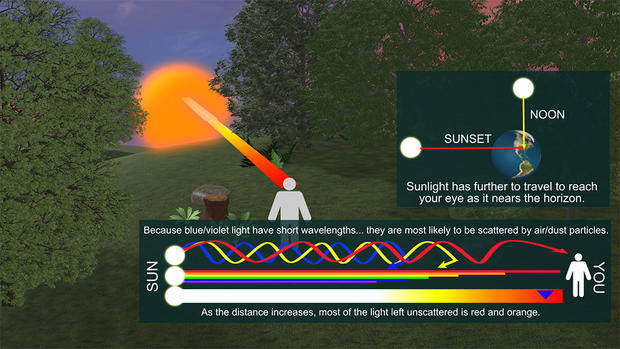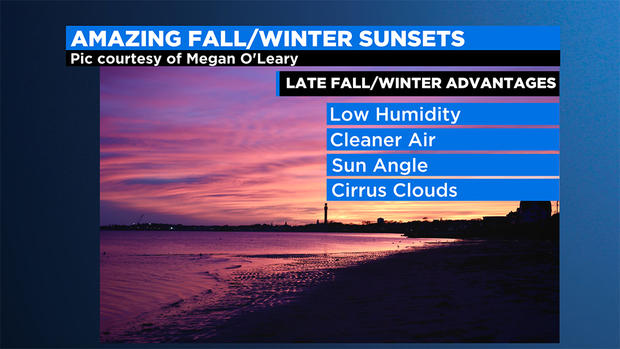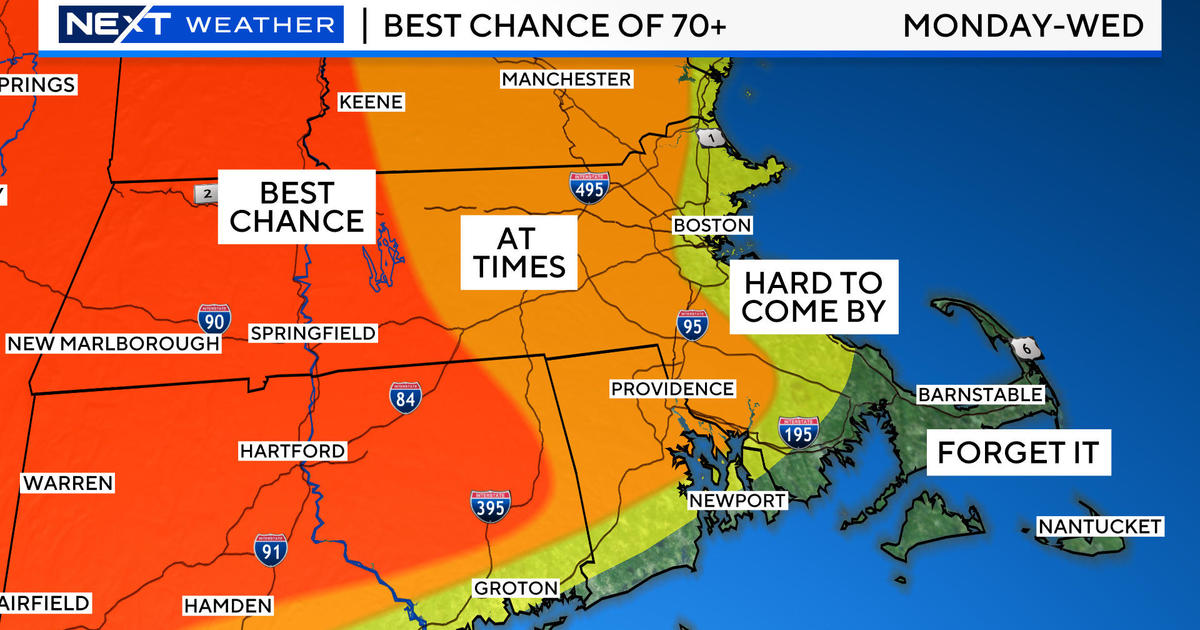Why Are Sunrises And Sunsets So Vibrant Lately?
BOSTON (CBS) - In case you hadn't noticed, the sunrises and sunsets this month have been AMAZING! We have been inundated with viewer pictures nearly every day, each more impressive than the last.
So what is going on?
First off, the weather this November has been extremely pleasant. I don't know about you, but when I think of November I think of bare trees, cloudy skies and generally gloomy weather. This month has been the opposite. Boston hasn't had a drop of rain yet this month and just about every day has featured clear skies with just some high, thin cirrus clouds around.
But, it turns out, there is much more to it than that! The time of year plays a major role in the number of and vibrancy of sunrises and sunsets. Believe it or not, the late fall/winter is the absolute best time of year for sunrises and sunsets.
There are several reasons for this, but first, let's start with the basics.
Why do we get beautiful colors at sunrise and sunset?
The color of the sky we see every day is caused by something called Rayleigh scattering. The light from the sun contains all the colors of the rainbow but each have different wavelengths and therefore reach the Earth in different concentrations. Our sky is blue most of the time thanks to the abundance of nitrogen and oxygen in our atmosphere which tend to scattered the shorter wavelengths of blue and violet more effectively. At sunrise and sunset, the sunlight has to travel through more atmosphere to reach our eyes therefore the blues, yellows and greens are already scattered out, leaving the reds and oranges.
Why is this effect even more dramatic this time of year?
Cleaner air:
The dust and pollution in the air (typically more in the summer) can reduce the intensity of the sky color. This is due to the added particles in the atmosphere which can scatter the sunlight. The summer haze tends to mute sky color whereas the crisp and clean air in the fall allows more of the reds and oranges through.
Lower humidity:
The more moisture (water vapor) in the air, the more dull the colors. As we know, New England is known for the classic cool and dry nights in the late fall and winter. Lower humidity = more vibrant colors.
Sun angle:
Obviously, in fall and winter in our northern latitude we have lower sun angles. As stated earlier, the lower the sun angle, the more atmosphere for the light to travel through and again you are left with the longer wavelengths (reds and oranges).
Clouds:
Perhaps the biggest and most important factor any time of year for a vibrant sunset are the clouds. If you have a low overcast, clearly you aren't getting any sunset. The ideal conditions for the perfect sunset are high-level, thin cirrus clouds, comprised most of ice crystals. These are often associated with an incoming storm system, but can be present in fair weather as well.
There you have it! Everything you ever wanted to know about sunsets but were afraid to ask.
By the way, if you snap any great sunrise or sunsets pics, send them along! We would love to see them! Email to weather@wbztv.com.
Follow Terry on Twitter @TerryWBZ






